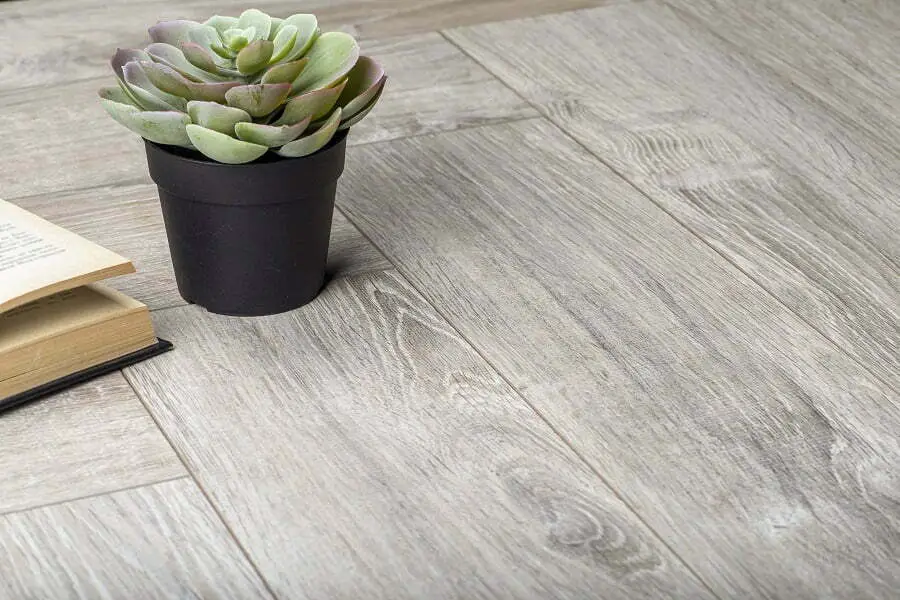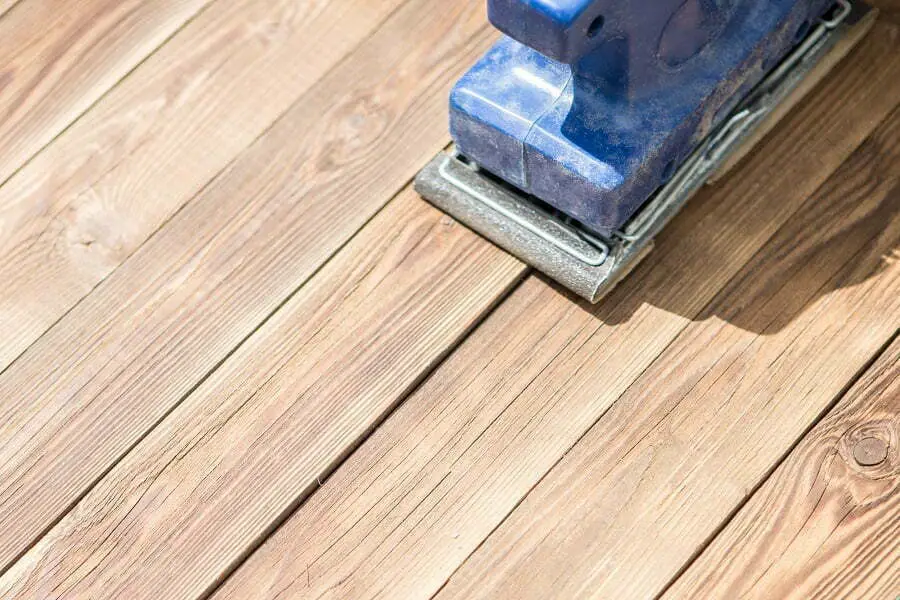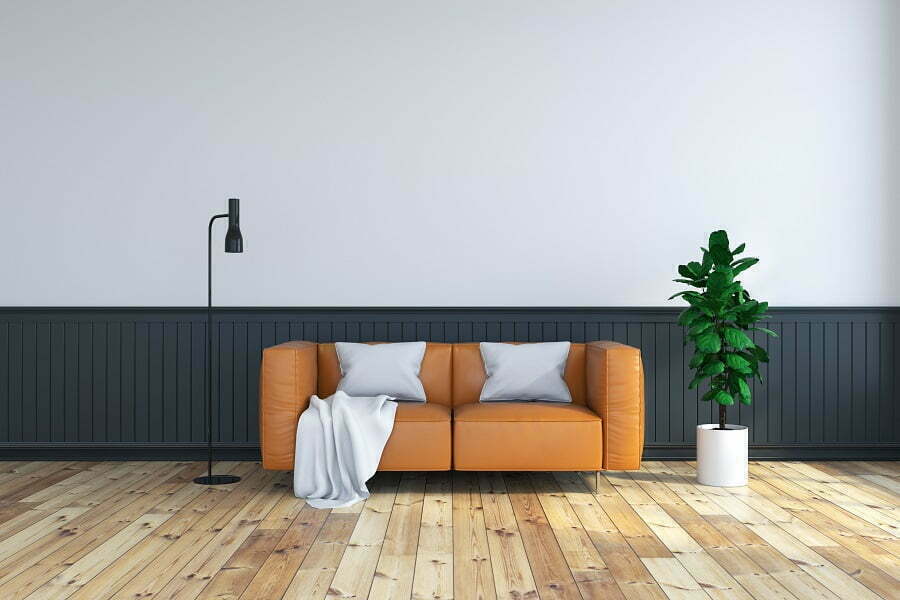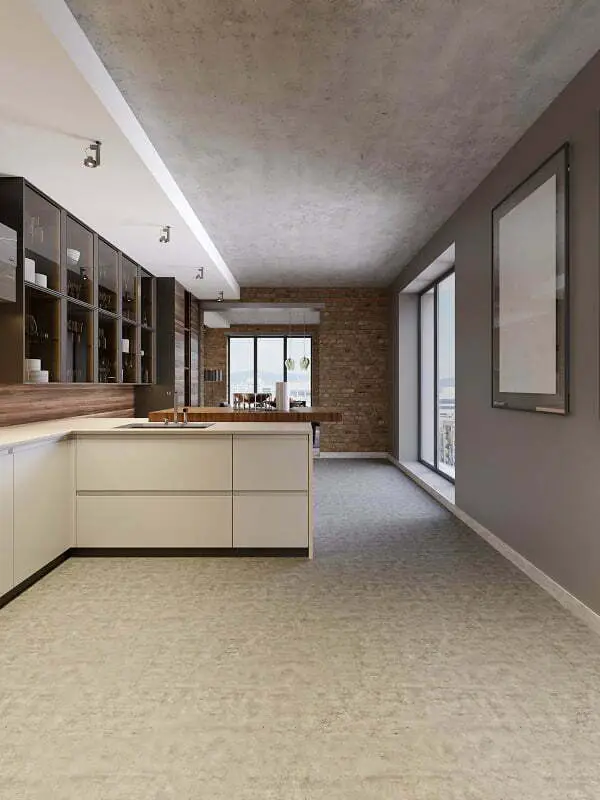Last updated on
Nobody wants to spend a ton of money renovating the floors of their home just to have them damaged months later. Here’s how you can avoid that in five easy ways. Read on!
If you’re renovating an old house you’ve bought or just changing up your current home, new flooring is one of the big changes you can make. Flooring is a vital part of the design of any room and having a floor you love can really help bring a room together.
With this in mind, it is essential to care for your floor and protect it from damage as best you can. You will obviously want your floors to last a long time and especially if you have invested a sizable amount of money into them. Accidents will happen and, particularly if you have a young family, sometimes these just can’t be avoided. However, there are some things you can do to help prevent damage from being done to your floors.
To help give you some ideas to help you protect your floors at home, we have asked for advice from Amtico to put this list together. They are experts when it comes to flooring and produces luxury vinyl flooring which can be installed throughout your home.
Table of Contents
Choose the Right Flooring for Specific Rooms

Installing a floor that does not fit the needs of a room can often lead to it becoming damaged. An example of rooms that must have flooring which is appropriate to its needs is the kitchen and bathroom. Because of the high level of moisture in these rooms and also the risk of the floor getting wet, either with spilled food in a kitchen or water from a bath or shower in the bathroom, the floors must be water-resistant to avoid damage.
If we compare wood to vinyl tiles, it is clear that wood is not suitable for kitchen or bathroom floors. Water can cause the wood to become discolored and damp, along with expanding and becoming misshaped. These issues can ultimately cause you to spend more money repairing or replacing the floor when you could have chosen a more appropriate option in the first place. In comparison, vinyl tiles are much more suitable for kitchens and bathrooms as they have a multi-layer design which allows the tiles to be water-resistant and highly durable.
Put Rugs Down in Busy Communal Areas
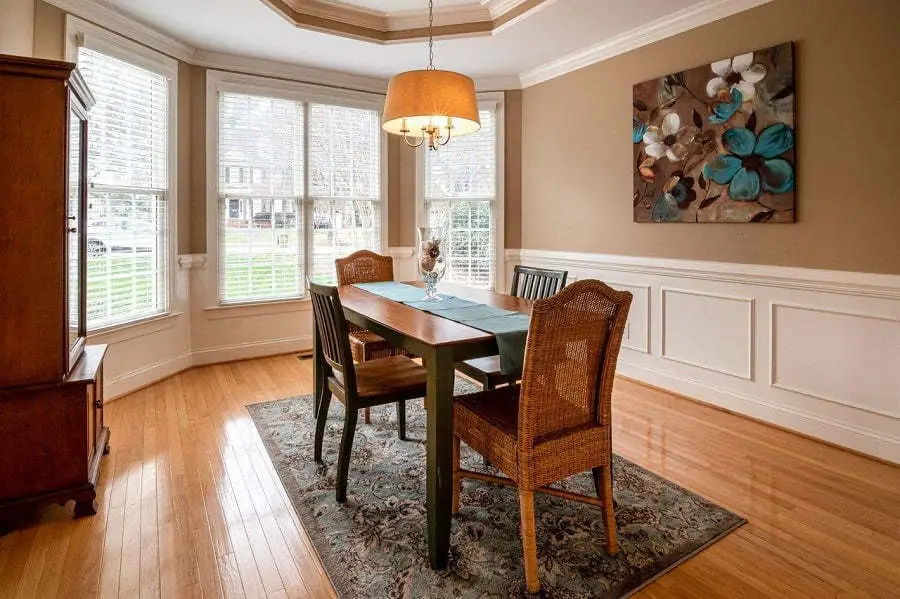
Some areas of your floor are going to experience more people walking over them more often, and with some types of flooring, this can lead to high levels of wear. Carpets, in particular, can see a fading and thinning effect in areas where they have a lot of foot traffic, for example in hallways. To help avoid this, you can strategically place rugs around your home.
Not only will this protect your floor, but it can actually enhance the look of your home. Rugs offer an excellent opportunity to add a splash of color or a different pattern to what can be a simple space. They also have the added benefit of helping reduce the noise if you have a hard floor. You can also get rugs which are machine washable and so you don’t need to use specialist equipment like a carpet cleaner.
Using an entrance mat inside your front door in order to wipe any dirt from your shoes is also a good way of protecting your floor. This is particularly useful if you have a light-colored carpet as it can help protect it from dirt and staining.
Add Covers to the Feat of Tables and Sofas

One of the most important things you can do to protect your floors at home is to make sure the pressure points from tables, chairs, sofas, etc., are all covered. This is important for multiple reasons. Firstly, if you have a carpeted floor and don’t move your furniture around, it can lead to impressions being made in the carpet which are hard to remove. Secondly, if you have a wood or tile floor and you are moving furniture around regularly, such as bringing a folding table away from the wall into the center of a room for dining, if you drag the table, it could cause scratches on some floors.
There is a variety of different furniture feat covering options available, some with fabric on the bottom and others with rubber. Depending on the flooring you have installed at home, some options will be better suited than others.
Another option to protect your flooring, particularly in a dining area where chairs may be moving around regularly, is to use a rug. If you place a large area rug under your dining table and chairs, you can not only protect your floor from scratches and pressure points but also from food and liquid spills. As mentioned above, you can get a machine washable rug, which would be very practical in this situation.
Trim Pet’s Claws

If you have dogs or cats, then keeping their claws trimmed down can help protect your floor. Not only can long claws cause scratches to wood floors but with carpet, if they scratch on the floor, it can damage the fabric. With cats specifically, if they are keen to scratch, then it might be worth investing in a scratching post for them. This can also help protect your furniture as table legs, or the sides of sofas can often be appealing to pets. If you are looking for a flooring material that will be able to withstand pet’s claws, without scratching, then vinyl could a good option.
Cleaning and Maintenance
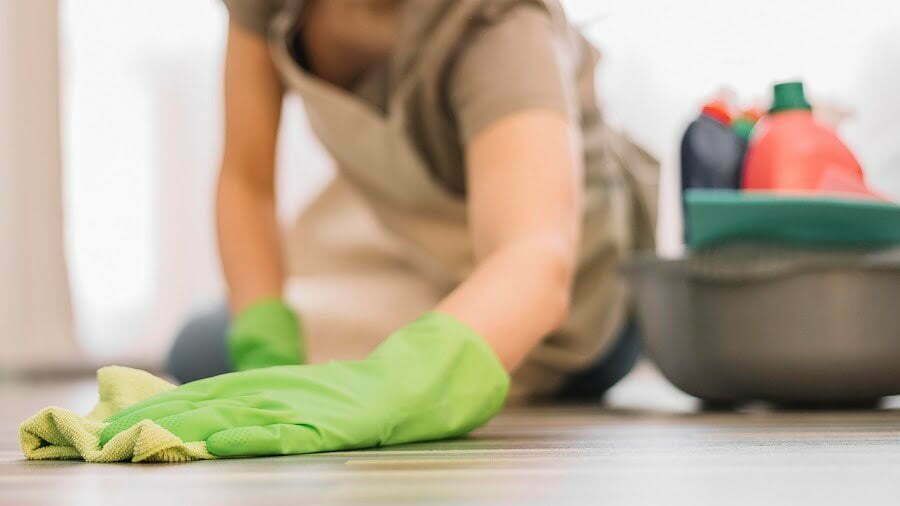
While this article has focused on how to avoid damaging your floors, it’s worth mentioning how you can clean and maintain your floors should they become damaged. As noted above, with carpet to get a deep clean you will need to get a carpet cleaning machine. While there are powders you can apply to your carpet, the machines provide the best results.
With wood floors, where scratches can be very noticeable, there are a variety of cleaning and maintenance options available. Everything from blending pencils for minor scratches to complete sand down and refinish of the floor, however, if you are going to sand your floor you must make sure there is at least 2mm of the real wood surface as the sander will usually remove 1mm.
Vinyl floors, while not requiring a lot of maintenance to keep clean do need to be mopped or swept every week to keep them looking their best. Scuffs and abrasion marks can be targeted with spot cleaning. If you manage to scratch your vinyl flooring, you can add a layer of protective dressing that will not only cover the scratch but help protect the floor further. These dressing layers can be removed and reapplied periodically, during which time any marks in this layer will also be removed and a new dressing layer can be applied.
Hopefully, these ideas will help you avoid damaging your floor at home, and the cleaning and maintenance tips will allow you to continue enjoying your floors for years to come!
You may also like to read:
